Computer hardware Generation of IBM
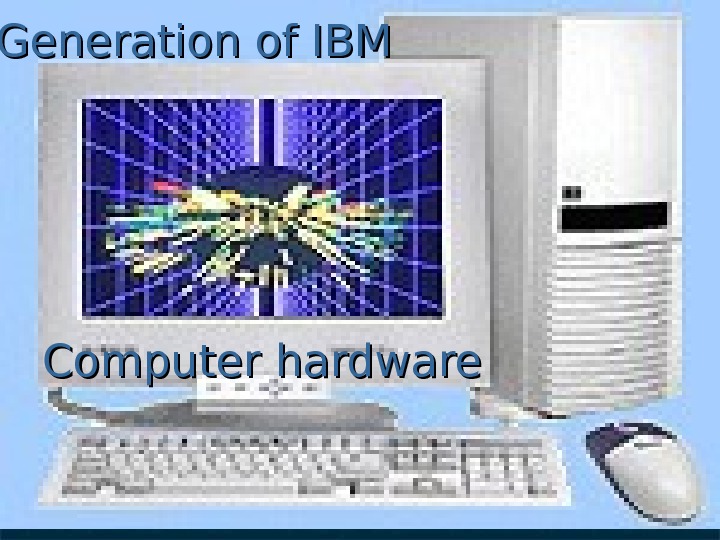
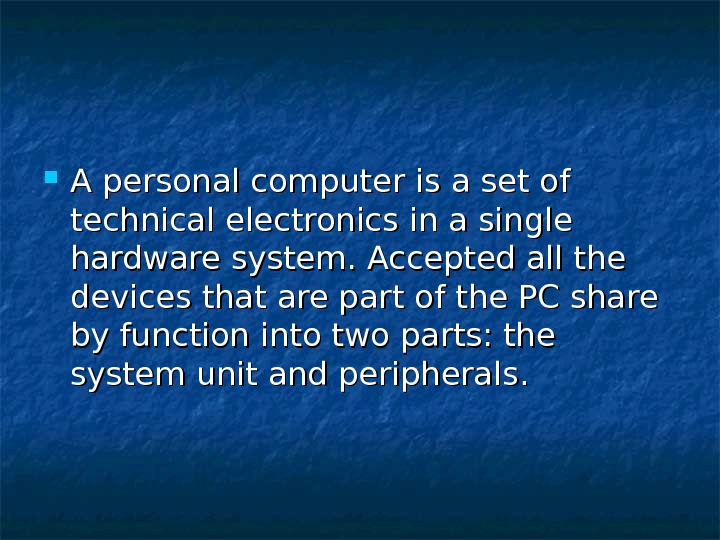
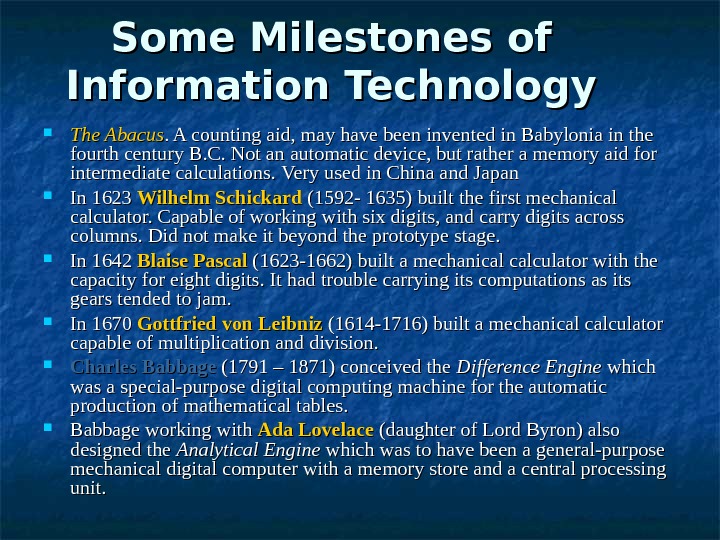
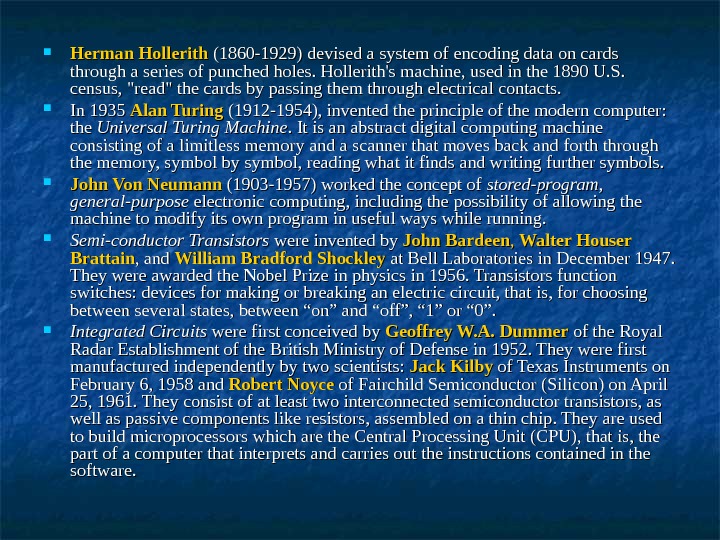
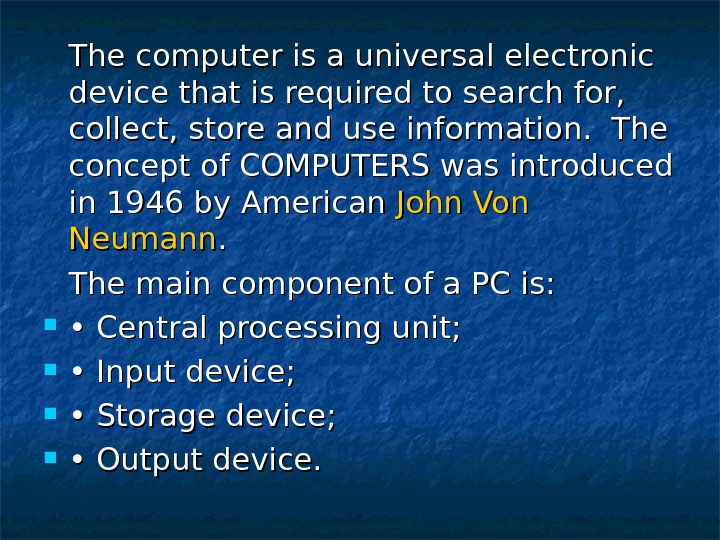
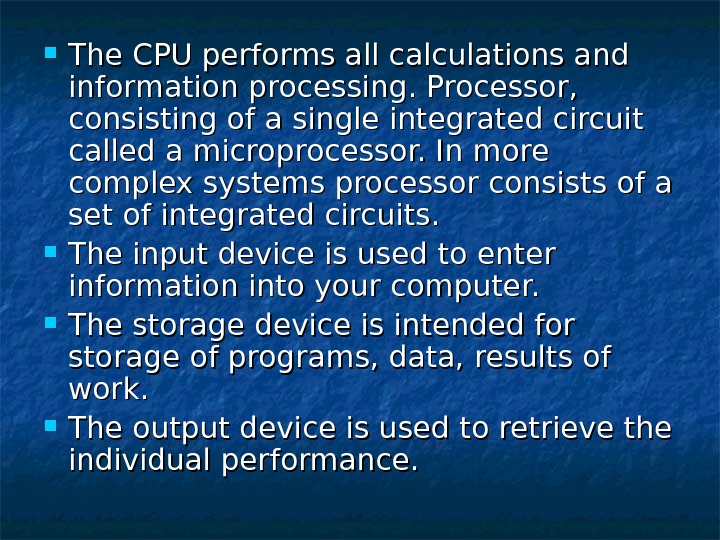
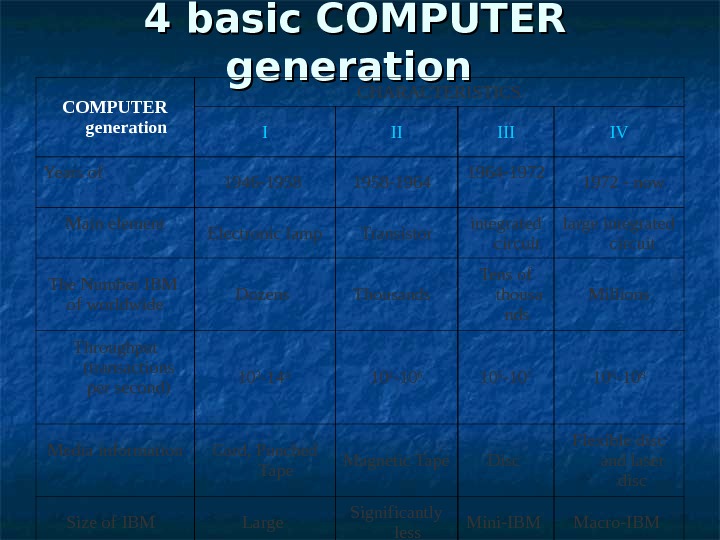
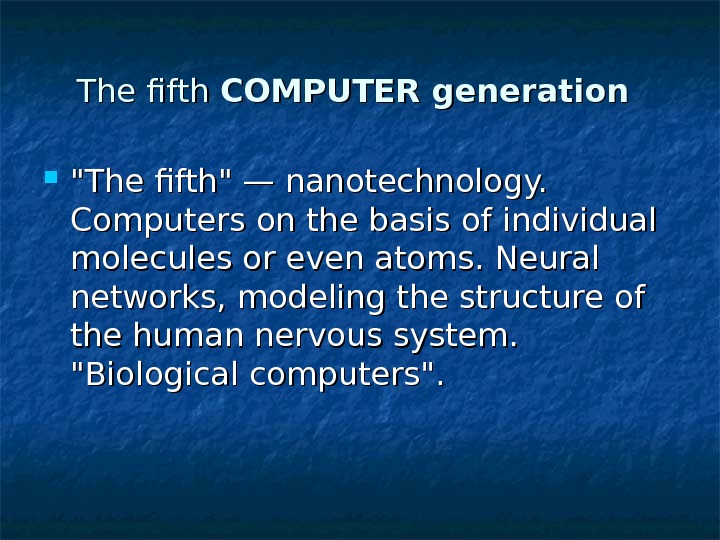
- Размер: 120.5 Кб
- Количество слайдов: 8
Описание презентации Computer hardware Generation of IBM по слайдам
 Computer hardware Generation of IBM
Computer hardware Generation of IBM
 A personal computer is a set of technical electronics in a single hardware system. Accepted all the devices that are part of the PC share by function into two parts: the system unit and peripherals.
A personal computer is a set of technical electronics in a single hardware system. Accepted all the devices that are part of the PC share by function into two parts: the system unit and peripherals.
 Some Milestones of Information Technology The Abacus. A counting aid, may have been invented in Babylonia in the fourth century B. C. Not an automatic device, but rather a memory aid for intermediate calculations. Very used in China and Japan In 1623 Wilhelm Schickard (1592 — 1635) built the first mechanical calculator. Capable of working with six digits, and carry digits across columns. Did not make it beyond the prototype stage. In 1642 Blaise Pascal (1623 -1662) built a mechanical calculator with the capacity for eight digits. It had trouble carrying its computations as its gears tended to jam. In 1670 Gottfried von Leibniz (1614 -1716) built a mechanical calculator capable of multiplication and division. Charles Babbage (1791 – 1871) conceived the Difference Engine which was a special-purpose digital computing machine for the automatic production of mathematical tables. Babbage working with Ada Lovelace (daughter of Lord Byron) also designed the Analytical Engine which was to have been a general-purpose mechanical digital computer with a memory store and a central processing unit.
Some Milestones of Information Technology The Abacus. A counting aid, may have been invented in Babylonia in the fourth century B. C. Not an automatic device, but rather a memory aid for intermediate calculations. Very used in China and Japan In 1623 Wilhelm Schickard (1592 — 1635) built the first mechanical calculator. Capable of working with six digits, and carry digits across columns. Did not make it beyond the prototype stage. In 1642 Blaise Pascal (1623 -1662) built a mechanical calculator with the capacity for eight digits. It had trouble carrying its computations as its gears tended to jam. In 1670 Gottfried von Leibniz (1614 -1716) built a mechanical calculator capable of multiplication and division. Charles Babbage (1791 – 1871) conceived the Difference Engine which was a special-purpose digital computing machine for the automatic production of mathematical tables. Babbage working with Ada Lovelace (daughter of Lord Byron) also designed the Analytical Engine which was to have been a general-purpose mechanical digital computer with a memory store and a central processing unit.
 Herman Hollerith (1860 -1929) devised a system of encoding data on cards through a series of punched holes. Hollerith’s machine, used in the 1890 U. S. census, «read» the cards by passing them through electrical contacts. In 1935 Alan Turing (1912 -1954), invented the principle of the modern computer: the Universal Turing Machine. It is an abstract digital computing machine consisting of a limitless memory and a scanner that moves back and forth through the memory, symbol by symbol, reading what it finds and writing further symbols. John Von Neumann (1903 -1957) worked the concept of stored-program, general-purpose electronic computing, including the possibility of allowing the machine to modify its own program in useful ways while running. Semi-conductor Transistors were invented by John Bardeen , , Walter Houser Brattain , and William Bradford Shockley at Bell Laboratories in December 1947. They were awarded the Nobel Prize in physics in 1956. Transistors function switches: devices for making or breaking an electric circuit, that is, for choosing between several states, between “on” and “off”, “ 1” or “ 0”. Integrated Circuits were first conceived by Geoffrey W. A. Dummer of the Royal Radar Establishment of the British Ministry of Defense in 1952. They were first manufactured independently by two scientists: Jack Kilby of Texas Instruments on February 6, 1958 and Robert Noyce of Fairchild Semiconductor (Silicon) on April 25, 1961. They consist of at least two interconnected semiconductor transistors, as well as passive components like resistors, assembled on a thin chip. They are used to build microprocessors which are the Central Processing Unit (CPU), that is, the part of a computer that interprets and carries out the instructions contained in the software.
Herman Hollerith (1860 -1929) devised a system of encoding data on cards through a series of punched holes. Hollerith’s machine, used in the 1890 U. S. census, «read» the cards by passing them through electrical contacts. In 1935 Alan Turing (1912 -1954), invented the principle of the modern computer: the Universal Turing Machine. It is an abstract digital computing machine consisting of a limitless memory and a scanner that moves back and forth through the memory, symbol by symbol, reading what it finds and writing further symbols. John Von Neumann (1903 -1957) worked the concept of stored-program, general-purpose electronic computing, including the possibility of allowing the machine to modify its own program in useful ways while running. Semi-conductor Transistors were invented by John Bardeen , , Walter Houser Brattain , and William Bradford Shockley at Bell Laboratories in December 1947. They were awarded the Nobel Prize in physics in 1956. Transistors function switches: devices for making or breaking an electric circuit, that is, for choosing between several states, between “on” and “off”, “ 1” or “ 0”. Integrated Circuits were first conceived by Geoffrey W. A. Dummer of the Royal Radar Establishment of the British Ministry of Defense in 1952. They were first manufactured independently by two scientists: Jack Kilby of Texas Instruments on February 6, 1958 and Robert Noyce of Fairchild Semiconductor (Silicon) on April 25, 1961. They consist of at least two interconnected semiconductor transistors, as well as passive components like resistors, assembled on a thin chip. They are used to build microprocessors which are the Central Processing Unit (CPU), that is, the part of a computer that interprets and carries out the instructions contained in the software.
 The computer is a universal electronic device that is required to search for, collect, store and use information. The concept of COMPUTERS was introduced in 1946 by American John Von Neumann. . The main component of a PC is: • • Central processing unit; • • Input device; • • Storage device; • • Output device.
The computer is a universal electronic device that is required to search for, collect, store and use information. The concept of COMPUTERS was introduced in 1946 by American John Von Neumann. . The main component of a PC is: • • Central processing unit; • • Input device; • • Storage device; • • Output device.
 The CPU performs all calculations and information processing. Processor, consisting of a single integrated circuit called a microprocessor. In more complex systems processor consists of a set of integrated circuits. The input device is used to enter information into your computer. The storage device is intended for storage of programs, data, results of work. The output device is used to retrieve the individual performance.
The CPU performs all calculations and information processing. Processor, consisting of a single integrated circuit called a microprocessor. In more complex systems processor consists of a set of integrated circuits. The input device is used to enter information into your computer. The storage device is intended for storage of programs, data, results of work. The output device is used to retrieve the individual performance.
 4 basic COMPUTER generation CHARACTERISTICS I II IV Years of 1946 -1958 -1964 1964 -1972 — now Main element Electronic lamp Transistor integrated circuit large integrated circuit The Number IBM of worldwide Dozens Thousands Tens of thousa nds Millions Throughput (transactions per second) 10 3 -14 4 10 4 -10 6 10 5 -10 7 10 6 -10 8 Media information Card, Punched Tape Magnetic Tape Disc Flexible disc and laser disc Size of IBM Large Significantly less Mini — IBM Macro-IBM
4 basic COMPUTER generation CHARACTERISTICS I II IV Years of 1946 -1958 -1964 1964 -1972 — now Main element Electronic lamp Transistor integrated circuit large integrated circuit The Number IBM of worldwide Dozens Thousands Tens of thousa nds Millions Throughput (transactions per second) 10 3 -14 4 10 4 -10 6 10 5 -10 7 10 6 -10 8 Media information Card, Punched Tape Magnetic Tape Disc Flexible disc and laser disc Size of IBM Large Significantly less Mini — IBM Macro-IBM
 The fifth COMPUTER generation «The fifth» — nanotechnology. Computers on the basis of individual molecules or even atoms. Neural networks, modeling the structure of the human nervous system. «Biological computers».
The fifth COMPUTER generation «The fifth» — nanotechnology. Computers on the basis of individual molecules or even atoms. Neural networks, modeling the structure of the human nervous system. «Biological computers».
